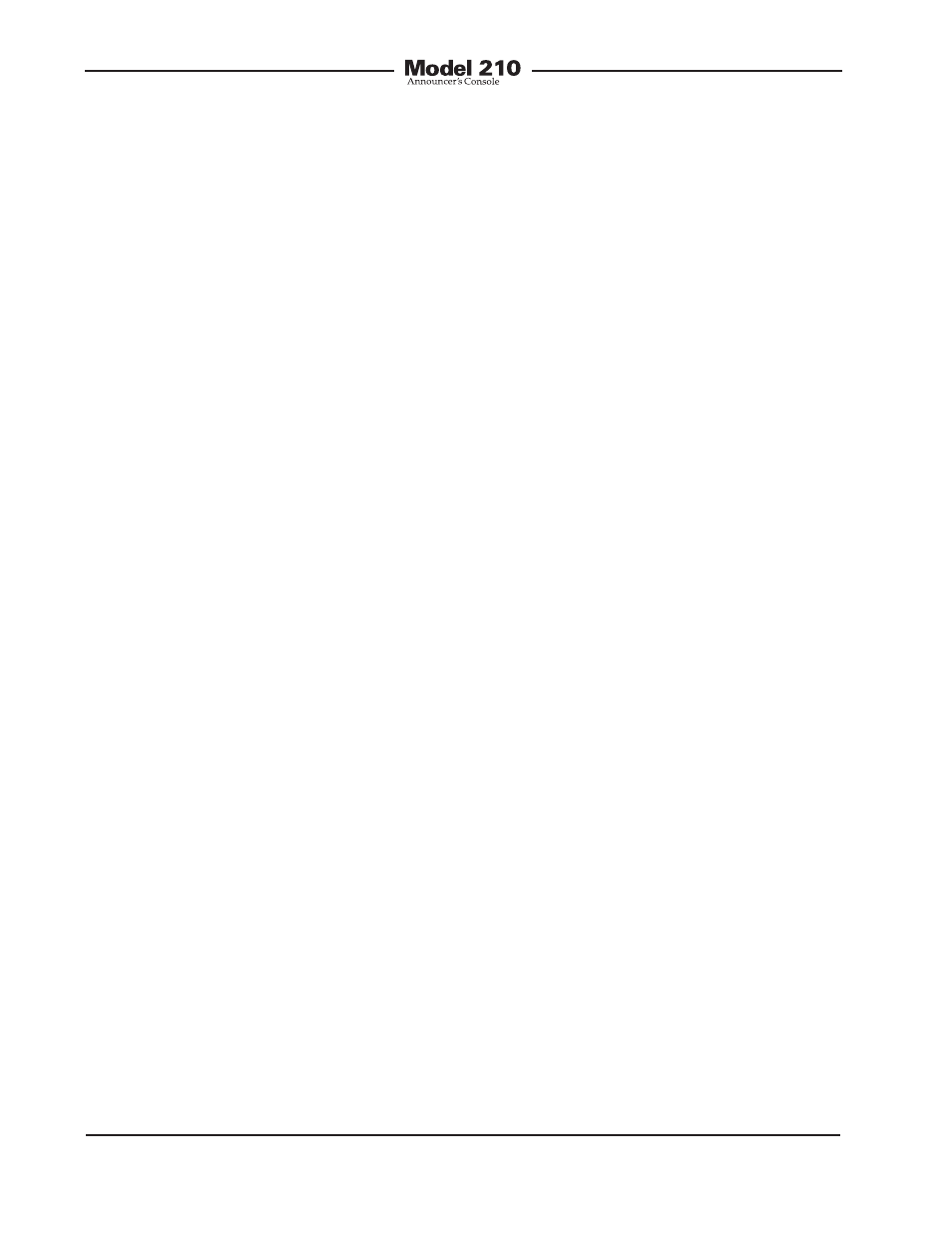Studio Technologies 210 2012 User Manual
Page 30

Issue 5, September 2012
Model 210 User Guide
Page 30
Studio Technologies, Inc.
pose a problem as a 24 volt DC power
supply is included with each Model 210.
Each line input card kit contains a printed
circuit board assembly, an interconnecting
cable, and hardware. To install the kit is
very simple. The XLR connector is mount-
ed into one of the spare connector loca-
tions on the Model 210’s back panel. This
secures the connector and associated
printed circuit board to the enclosure. The
interconnecting cable is then used to link
the card and the Model 210’s main printed
circuit board assembly. One end of the
cable is plugged into the line input card’s
3-position “header” that is labeled OUT.
The other end of the cable is plugged into
the desired 3-position header located on
the main printed circuit board. The header
associated with auxiliary input 1 is labeled
P11. The header associated with auxiliary
input 2 is labeled P10.
Note that the unused header remaining
on the line input card has its pins “multed”
with the leads on the 3-pin female XLR
connector. It is provided for other applica-
tions that may need it. Additional instal-
lation details are provided in the next
section of the user guide. Included is a
recommended connector labeling method
that is appropriate when line input cards
are installed.
For balanced audio sources the mating
connector (3-pin male XLR) should be
wired so that signal high (+ or hot) is
connected to pin 2, signal low (– or cold)
is connected to pin 3, and shield is con-
nected to pin 1. Unbalanced sources
should be wired so that signal high is on
pin 2, and signal low/shield is connected
to both pins 1 and 3. If this results in hum
on the input, try connecting signal high to
pin 2, signal low/shield to pin 3, and pin 1
left unterminated (“floating”).
Several things are worth mentioning when
it comes time to actually using a line input
card. The input is transformer coupled
with a nominal input impedance of 10 k
ohms. Capacitors in series with the trans-
former’s primary provide protection again
accidental connection of a cable that has
DC voltage present on it. The nominal
input level is +4 dBu but should work cor-
rectly with signal levels down to nominal
–10 dBu. So that the rotary level controls
provide a more comfortable range of
operation during actual use, reducing the
level of a “hot” input signal by 3 to 6 dB
is preferred, versus having a full +4 dBu
nominal level.
Note that if one or two line input cards are
installed in a Model 210, both “dry” line-
level audio signals and a “wet” IFB circuit
can be connected at the same time. The
audio sources will be routed to the head-
phone outputs by way of the headphone
source configuration switches. Each of
the four possible audio sources can be
routed to the left-headphone output, the
right-headphone output, or both head-
phone-output channels. Details on how
to use these switches are provided in the
Configuration section of this user guide.
In “emergency” situations it’s possible to
connect line-level audio signals directly
to the Model 210’s IFB input connector.
This can be successfully done as long as
several limitations are taken into account.
The first limitation is that the 10 k ohm
input circuit presents an unbalanced load
to the source. In most cases this shouldn’t
pose a problem. If a balanced intercon-
nection scheme must be maintained, an
in-line isolation transformer can be used.
A second limitation is that the audio level
presented must not exceed 0 dBu or sig-
nal “clipping” may occur. Prepare a 3-pin
